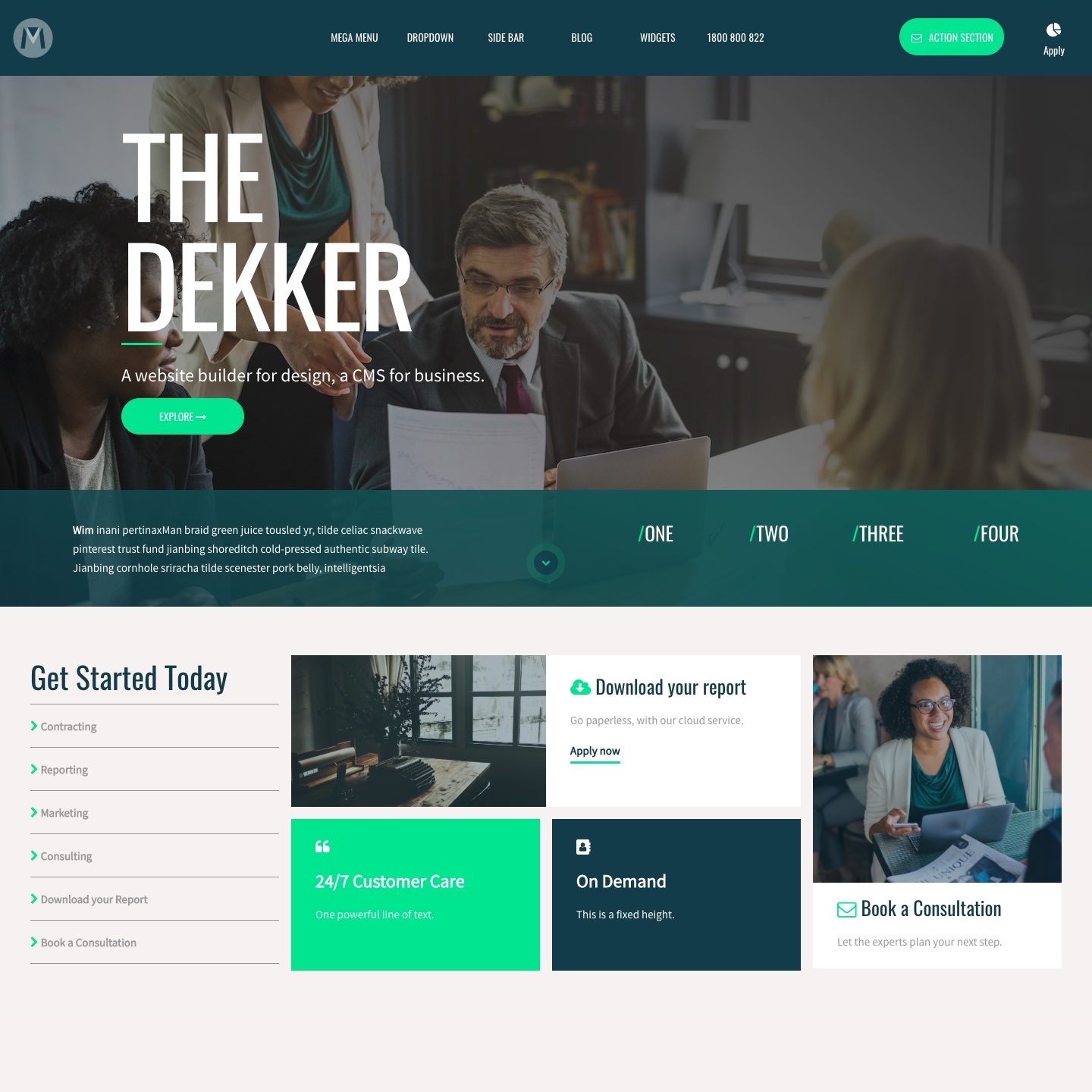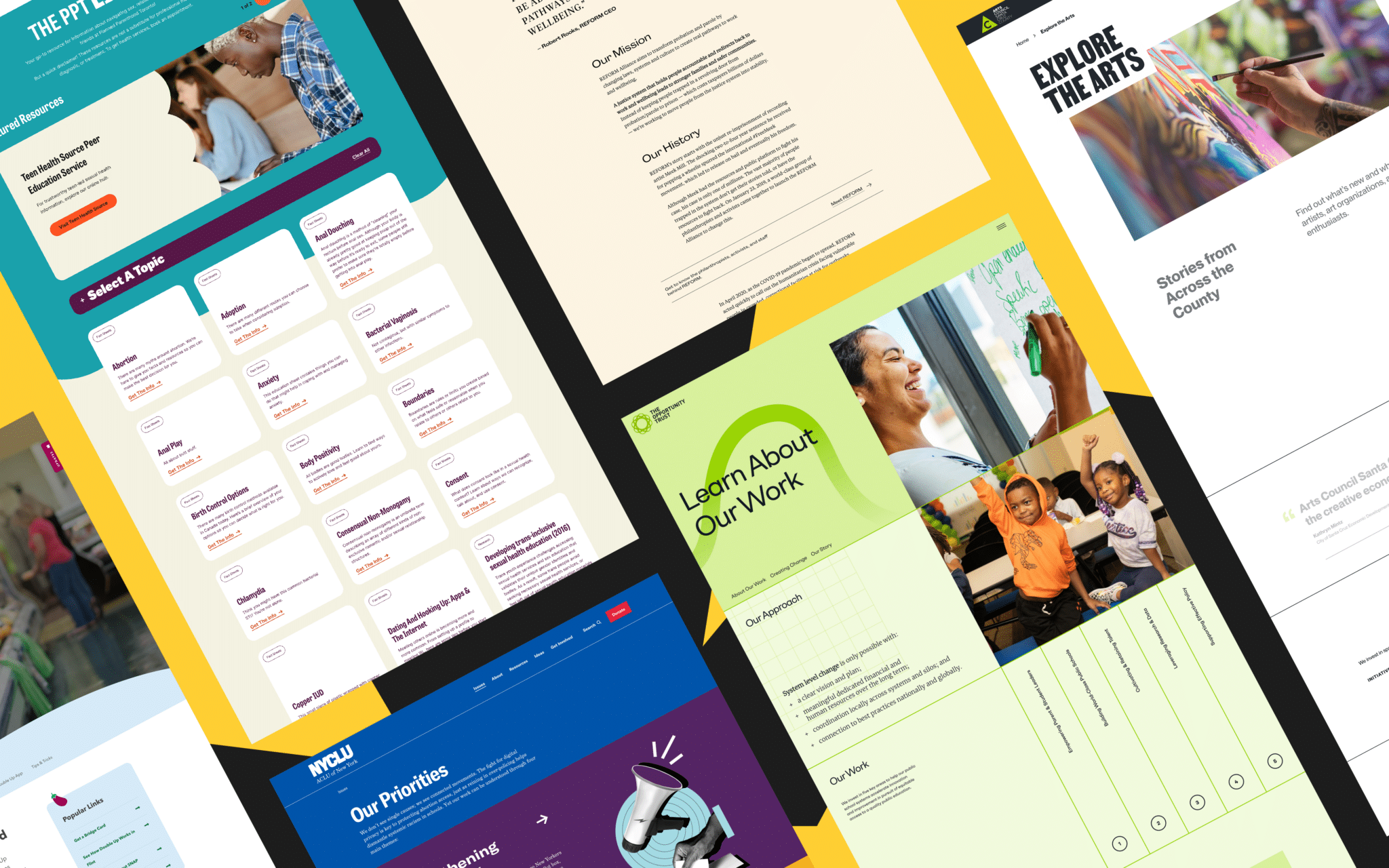Website Design for Small Businesses: Affordable Solutions for Success
Website Design for Small Businesses: Affordable Solutions for Success
Blog Article
Modern Web Site Layout That Captures Attention and Converts
In an increasingly electronic landscape, contemporary internet site layout has become a pivotal element in capturing customer attention and driving conversions. By tactically using aesthetic hierarchy, receptive formats, and involving interactive elements, designers can produce experiences that not just attract visitors but likewise facilitate meaningful communications. Additionally, efficient call-to-action approaches play an important role in leading individuals toward desired results. As we check out these crucial parts, it ends up being clear that understanding their interaction can substantially affect a site's efficiency and individual satisfaction. What are the essential elements that absolutely make a difference?
Value of Visual Power Structure
Visual pecking order is an essential aspect in internet site design, as it guides customers' interest and improves their total experience. By strategically organizing material, designers can guide customers to the most important information first, thus increasing interaction and enhancing use. Efficient aesthetic pecking order utilizes various techniques, consisting of size, shade, comparison, and spacing. Larger aspects normally draw the eye, while contrasting shades can emphasize key messages, making them stand apart amongst even more controlled components.
Including a rational circulation in material setup is important; as an example, positioning one of the most essential info at the top of a web page cultivates prompt acknowledgment. Consistent usage of typography, such as varying font dimensions and designs, helps establish a clear content structure. This company not only aids in navigation but also builds trust fund, as customers really feel extra comfy when they can quickly find what they are searching for.
Eventually, a well-executed visual hierarchy not only improves visual charm but also considerably influences user habits. By prioritizing important aspects and guaranteeing a seamless experience, developers can efficiently transform site visitors into clients, enhancing the value of this foundational layout principle in contemporary site growth.
Responsive Style for All Gadgets
Creating a smooth experience across different devices is essential in today's digital landscape, where customers access sites from mobile phones, tablets, and desktops alike. Responsive style is an important method that makes certain sites adjust fluidly to different display sizes, alignments, and resolutions. By using adaptable grids, pictures, and CSS media questions, developers can create formats that maintain aesthetic honesty and functionality, no matter the gadget being used.
The significance of receptive style prolongs beyond visual appeals; it straight influences individual interaction and conversion prices. A website that functions well on all devices motivates longer brows through and decreases bounce prices, as users are more probable to connect with content that is very easy to navigate. In addition, search engines, specifically Google, prioritize mobile-friendly sites in their rankings, making responsive style an essential element of search engine optimization (SEARCH ENGINE OPTIMIZATION)
Including responsive layout not just improves individual experience yet also streamlines the development procedure. By creating a solitary site that functions across devices, services can save time and resources contrasted to establishing different mobile and desktop computer variations. Ultimately, responsive layout is a fundamental method for contemporary internet site layout, ensuring ease of access and satisfaction for all individuals, no matter their gadget.
Engaging Interactive Aspects
While a receptive layout prepares for a practical website, incorporating appealing interactive aspects is crucial for capturing user attention and promoting much deeper connections. Website Design. Interactive aspects, such as computer animations, tests, and clickable infographics, produce a more dynamic customer experience, motivating visitors to spend even more time on the website
Incorporating interactive features can likewise assist users via facility details, making it less complicated to digest content. Interactive sliders can illustrate product variations, while embedded video clips can give demonstrations or endorsements that resonate even more than fixed photos or message. Gamification strategies, like rewards for involving or completing jobs with content, can boost user motivation and retention.
Effective use of interactive elements not only enhances the customer experience however can likewise lead to higher conversion prices. It is important to balance interactivity with performance; overly intricate features may prevent site rate, adversely affecting customer complete satisfaction.
Structured Navigating Practices
Reliable navigation is a keystone of any type of effective web site, as it directly affects user experience and web content accessibility. Streamlined navigation practices ensure that users can easily find info, improving their interaction with the website. A well-structured navigation food selection should be instinctive and simple, commonly including a limited number of main categories to prevent overwhelming visitors.
To achieve structured navigating, developers must prioritize a hierarchical structure that logically arranges material. Implementing breadcrumb trails can offer customers with context regarding their existing location within the site, enabling for seamless backtracking. Additionally, making use of link drop-down menus can successfully save room while still giving accessibility to subcategories.
Responsive style is important, as navigating should be practical throughout all devices (Website Design). Mobile individuals, particularly, gain from touch-friendly food selections and retractable areas that keep usability without jeopardizing looks

Efficient Call-to-Action Approaches
A well-crafted call-to-action (CTA) is important for assisting customers towards wanted outcomes on a site, as it encourages them to involve with material or make an acquisition. To maximize their effectiveness, CTAs ought to be clear, engaging, and purposefully positioned throughout the site.
First, make use of action-oriented language that interacts necessity or value, such as "Start," "Sign up with Now," or "Insurance claim Your Discount." This language not just inspires customers but likewise sets clear assumptions about the following steps.
2nd, consider design elements; CTAs ought to stand out aesthetically via contrasting colors, ample whitespace, and prominent positioning. A switch that is simple to see and click increases the possibility of user interaction.
In addition, individualizing CTAs based on individual actions or demographics can considerably improve interaction. Customized messages resonate more with individuals, driving greater conversion rates.

Final Thought
These elements collectively improve individual experience, making sure that site visitors continue to be involved and encouraged to discover web content further. By prioritizing these design principles, companies can dramatically boost user retention and conversion rates, inevitably leading to higher success in the electronic landscape.
In a progressively electronic landscape, modern site design has emerged as a pivotal aspect in capturing user interest and driving conversions.Aesthetic hierarchy is a vital component in internet site layout, as it guides individuals' interest and improves their overall experience.The relevance of responsive style expands past aesthetics; it straight impacts customer interaction and conversion rates.Incorporating responsive layout not only enhances customer experience yet also simplifies the advancement process. Inevitably, receptive style is a basic method for contemporary site design, guaranteeing ease of access and complete satisfaction for all customers, regardless Going Here of their gadget.
Report this page